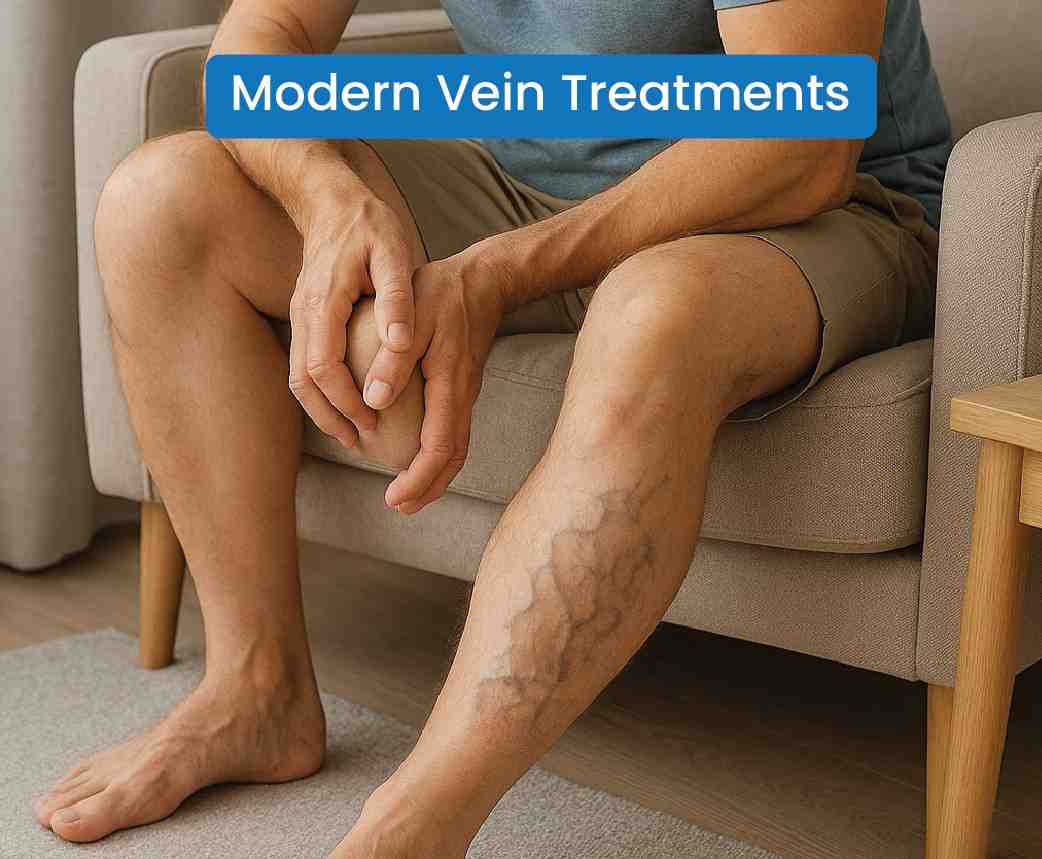Endovenous Laser Ablation (EVLA): The Gold Standard
EVLA represents the pinnacle of modern vein treatment technology. This procedure utilises a precise 1470nm wavelength laser that specifically targets water molecules within the vein wall. During the procedure, your physician guides a thin 7Fr catheter through the problematic vein using ultrasound guidance. The laser delivers carefully controlled thermal energy at 70-120°C, effectively sealing the vein shut. The entire process takes just 30-45 minutes and boasts an impressive 98% success rate.
The cost for EVLA in India ranges from ₹45,000 to ₹75,000 per leg, including follow-up care. Many insurance providers now offer coverage for this treatment, recognising its proven effectiveness and long-term benefits. Patients usually require only one treatment session, making it cost-effective compared to repeated surgical interventions.
Radiofrequency Ablation (RFA): Controlled Precision
RFA offers exceptional precision through segmental heating at 120°C using the sophisticated ClosureFast™ catheter. The procedure methodically treats the vein in 20-second cycles, with built-in temperature monitoring ensuring optimal results. Taking 45-60 minutes to complete, RFA achieves a 96% success rate with minimal discomfort.
The treatment costs between ₹40,000 and ₹65,000 per leg in India, making it slightly more affordable than EVLA. Insurance coverage is similar to EVLA, though approximately 5% of patients may require a follow-up session for optimal results.
VenaSeal™: The Latest Innovation
VenaSeal represents the newest advancement in vein treatment. This revolutionary approach uses medical-grade N-butyl-2-cyanoacrylate adhesive delivered through a minimal 5Fr catheter. The adhesive polymerises within 30 seconds of deployment, instantly sealing the vein without requiring tumescent anaesthesia. The entire procedure takes just 20-30 minutes and maintains a 95% success rate.
At ₹75,000 to ₹1,20,000 per leg, VenaSeal commands a premium price point in India. However, patients save on compression stockings (₹2,000-4,000) and enjoy the quickest return to normal activities. Insurance coverage varies, with some providers still considering this cutting-edge treatment as elective.
Sclerotherapy: The Spider Vein Solution
Sclerotherapy excels in treating spider veins and small varicose veins. Your physician injects a specialized solution (either Polidocanol or Sodium Tetradecyl Sulfate) directly into the problematic veins using ultra-fine needles. The solution irritates the vein walls, causing them to collapse and eventually fade away. Each 15-30 minute session targets multiple veins, with a cumulative success rate of 90%.
In India, sclerotherapy costs between ₹15,000-₹25,000 per session, with most patients requiring 3-4 sessions for optimal results. While the per-session cost appears lower, the total investment might reach ₹45,000-₹75,000 for a complete treatment course. Insurance rarely covers cosmetic sclerotherapy.
Traditional Surgery: The Legacy Approach
Traditional vein stripping, while still necessary in some cases, involves general anaesthesia and multiple incisions to physically remove the problematic veins. This 2-3 hour procedure carries an 85% success rate but demands significant recovery time and poses higher risks of complications.
The total cost in India ranges from ₹60,000-₹1,00,000 per leg, including hospital stay, surgery, and anaesthesia costs. While insurance typically covers surgical intervention, the extended recovery period (2-3 weeks) and higher complication rates make it less appealing for most patients.
Hidden Cost Considerations
When calculating total treatment expenses, consider:
- Pre-procedure investigations: ₹5,000-8,000
- Compression stockings: ₹2,000-4,000
- Follow-up visits: ₹500-1,500 per visit
- Lost workdays: Variable based on profession
- Travel costs for multiple sessions
- Post-procedure medications: ₹2,000-3,000
Making Your Choice
While modern treatments may seem more expensive initially, they often prove more economical when considering:
- Minimal time away from work
- Lower risk of complications
- Reduced need for follow-up treatments
- Better long-term results
- Fewer additional medical expenses
Contact us today for a personalised consultation to determine which treatment best suits your needs and budget.
Note: Treatment costs may vary based on location, hospital, and specific medical requirements. Please verify insurance coverage individually. Costs are approximate and subject to change.





